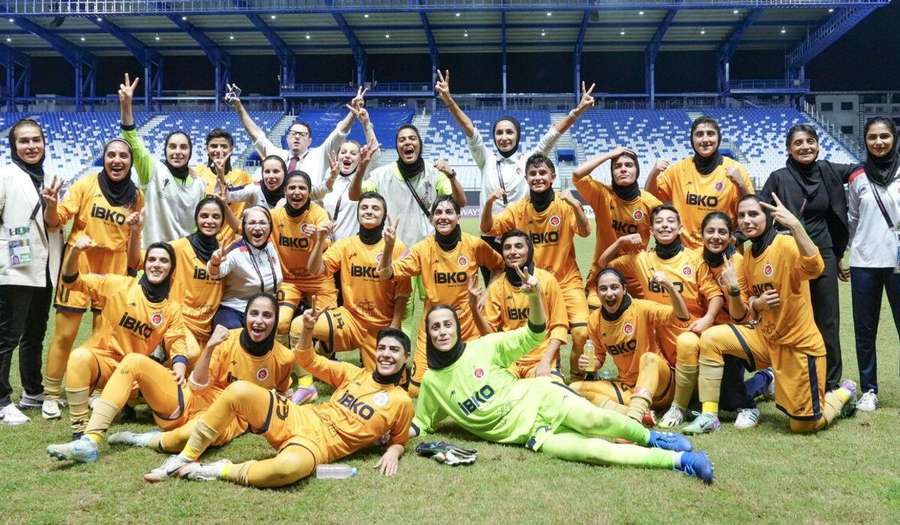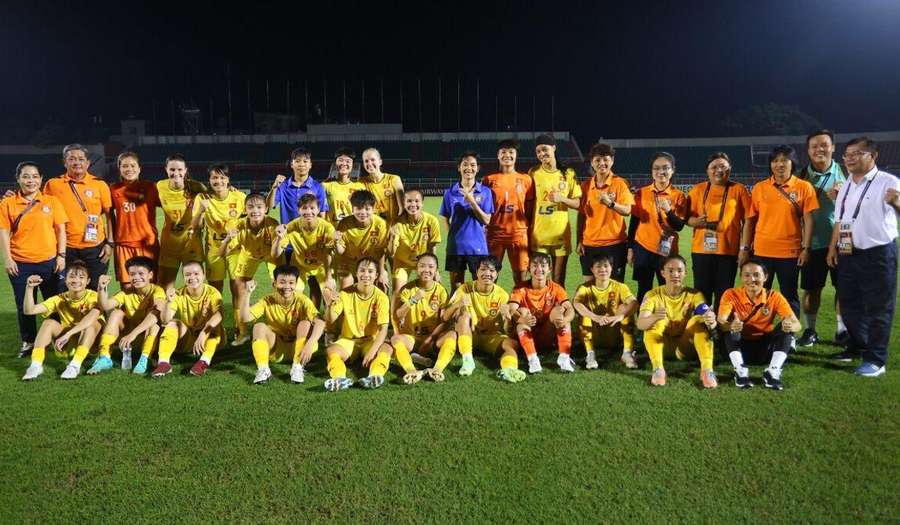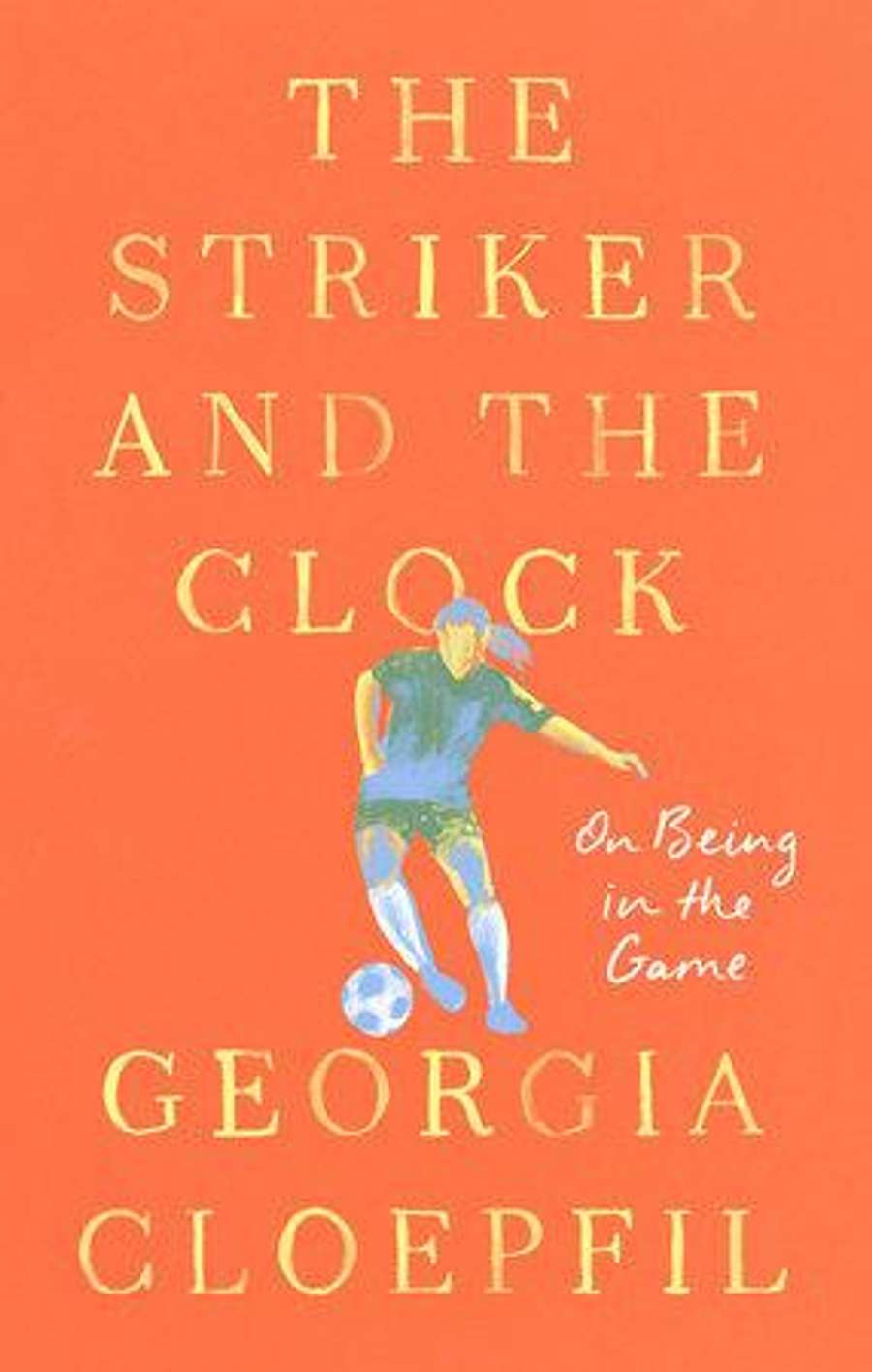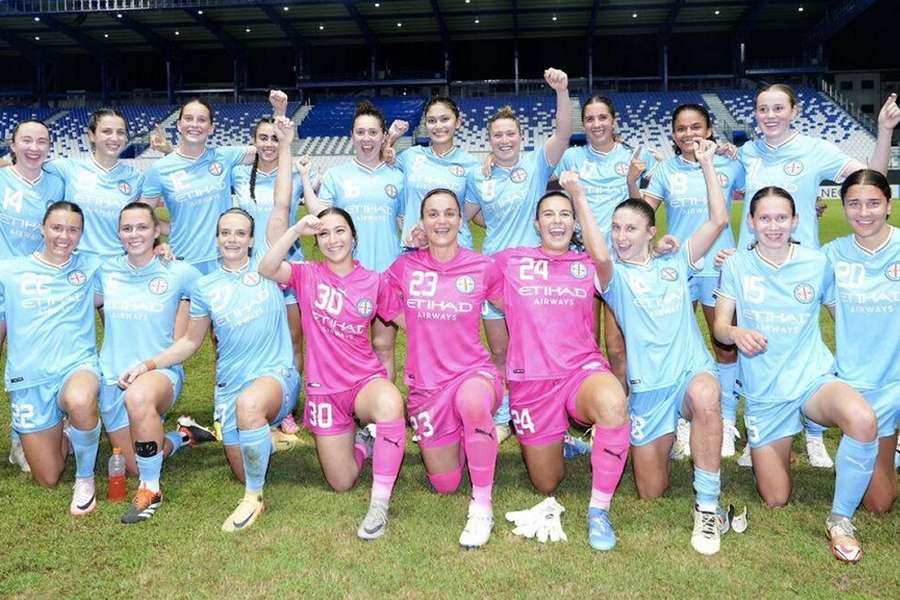TribalFootball.com also interviewed Cloepfil, who is now a college assistant soccer coach and English instructor in the Pacific Northwest, about her thoughts on the best way for small college players to find professional clubs and what she would like to see take place within the game in the coming years.
Asian Women’s Champions League Group StageEarlier this month we reviewed the Preliminary Round of the expanded Asian Women’s Champions League involving 13 teams (see: The Week in Women's Football: NWSL (& Tribalfootball) welcome new signings; AFC Club Championship review - TribalFootball.com).
The AFC Women’s Champions League Group Stage Finals were held from October 6-12 with three groups of four teams. The AFC will provide each group stage participant with at least U.S. $100,000. The ultimate champion will receive at least $1,300,000 in prize money.
Group A
Wuhan Jiangda of China
Incheon Red Angels of Korea Republic
Sabah of Malaysia
Abu Dhabi Country Club of UAE
Incheon Red Angels of Korea Republic won Group A with 7 points, with Abu Dhabi Country Club of the UAE second on 5 points—the two clubs drawing their second match 2-2—with host side Wuhan Jiangda of China finishing third on three points and Sabah of Malaysia fourth with 1 point. Wuhan advanced to the quarterfinals as one of the best third place sides in the Group Stage.
Incheon Red Angels had three imports on their side: Japanese midfielder Yoko Tanaka (31), who played for three years in Spain from 2019-20 through 2021-22, and two forwards from Africa:
Tereza Engesha (26), who is tied for the lead among the tournament’s goal scorers in the group stage with five goals (along with Mitki Ito of Urawa of Japan—see more below); she also played with Vihiga Queens at home. Engesha has scored five goals in 12 international appearances for Kenya. She has won three league titles in Kenya—leading the league in scoring twice—and two titles in Korea’s WK League.
Ines Nrehy (31) of Ivory Coast, who won a league title with Rossiyanka in Russia in 2016 and played for her country in the 2015 WWC Finals in Canada. She has also played in Turkey, in Serbia with Subotica and at home with Juventus Yopougon.
Abu Dhabi Country Club’s imports were presented last month: The Week in Women's Football: NWSL (& Tribalfootball) welcome new signings; AFC Club Championship review - TribalFootball.com).
Wuhan Jiangda had two imports from Africa, including midfielder Saratou Traore (22) of Mali, who joined the side from Guingamp in September of 2024. She also played for Fatih Karagumruk in Turkey in 2022, scoring 15 times in 25 matches, and is a full international for Mali. Forward Kabange Mupopo (32) of Zambia was on the 2024 Olympic Games Finals side for the recent Paris games. She was a top sprinter in Athletics but had to serve a four-year ban for taking a banned substance. She returned to soccer with the Green Buffalos in Zambia at the club level.
Sabah of Malaysia used three imports from Japan as well as forward Gladys Amfobea (26) of Ghana, who has played for her nation at the U-17 and senior levels. Amfobea first moved abroad in 2023 with HOPS (House of Power Soccer Football Club) of Delhi, India. Another import was Win Theingi Tun (29), a full international for Myanmar, who also played in the Indian Women’s Premier League with Odisha FC. She became the first Myanmar women’s footballer to move abroad when she joined Gokulam Kerala FC in late 2021.
Group B
Melbourne City of Australia
Kaya-Iloilo of Philippines
College of Asian Scholars of Thailand
Bam Khatoon of Iran
In Group B, Melbourne City cruised to the quarterfinals with 9 points, allowing only one goal while scoring nine times in their three games. Bam Khatoon of Iran (4 pits) continued their inspiration play from the Preliminary Round and advanced to the quarterfinals. Kaya-Illoio of Philippines (2 points) and host side College of Asian Scholars of Thailand (1 point) did not advance.
For Melbourne, American-born Venezuelan international Mariana Speckmaier scored three goals in the Group B matches after moving over from Wellington Phoenix in the off-season, while American midfielder Lourdes Bosch (23), who played at the University of Nevada-Las Vegas and California Baptist University, also added a hat-trick. Ahead of the 2023 season, Bosch was named on the watchlist for the prestigious Hermann Trophy, awarded to the best college player in America. She is on a two-year deal with City. She can play internationally for Mexico as well as the U.S. We will go in-depth into Melbourne City’s squad, including a few other imports, next month with out 2024-24 A League Women annual preview.
Bam Khatoon of Iran used an entirely domestic side in their WCL Group matches

For Kaya-Iloilo of the Philippines, midfielder Judit Peran (32) of Spain and American-born Julissa Cisneros (24)—who played at Southern Methodist University and the University of Missouri—were their only imports. Cisneros grew up in the U.S. but can play for Mexico, where her parents were born.
BG College of Asian Scholars of Thailand had two imports—both from Brazil:
Midfielder Beatriz da Silva (34), who won the league title this season for BG College after time in the Faroe Islands and at home. She played last season with newly promoted 247FC in Hong Kong.
Forward Stefani Cabral (33) “ Tefa” also won a title with BG College last season and played in the Faroe Islands, Hong Kong and at home with Gremio and Foz de Iguacu Cataratas, located in the border city with Argentina and Paraguay in the southwest region of the country.
Group C
Urawa Red Diamonds of Japan
Ho Chi Minh City of Vietnam
Taichung Blue Whale of Taiwan (Chinese Taipei)
Odisha of India
Urawa Red Diamonds of Japan were the most dominate side in the Group Stage, winning all three games to compile 9 points, scoring 21 times versus none allowed. Ho Chi Minh City of Vietnam, the host side of Group C, finished second on 6 points, while Taichung Blue Whale of Chinese Taipei was third on three points, but advanced to the quarterfinals as one of the two best third place sides. Odisha of India, a surprise side advancing out of the Preliminary Stage, was last with 0 points, scoring only once and allowing 24 goals, including a 17-0 loss to Urawa Red Diamonds.
Urawa Red Diamonds used an all-domestic based squad, including 42-year-old Japanese forward Kozue Ando, who is in her third season with Urawa after a decade in Germany with Essen, Frankfurt and Duisburg. She won a Women’s World Cup title with Japan in 2011 and a UEFA WCL title in 2014-15 with FFC Frankfurt. Miki Ito (29) had five goals to joint lead the group stage goal scorers’ table in the Asian Women’s Champions League. In the last four seasons, Ito has won two WE-titles in Japan with Urawa Red Devils in 2023-24, scoring six goals with one assist in 22 games, and with INAC Kobe Leonessa in 2021-22.
Ho Chi Minh City of Vietnam used an entirely domestic side except for three Americans:
Defender Talani Barnett (24), who played her collegiate career from 2018 to 2022 at Ohio State University.
Midfielder Tatiana Mason (24), who also played in Denmark with Naestved IF/Herlufsholm GF. Mason also played in the W-League with AFC Ann Arbor Mighty Oak in the USL W League. She first went abroad to play with Israeli Ligat Nashim second tier side Bnot Netanya FC for the 2022-23 season. Mason played her college football at Ball State University.
Forward Meghan Root (24) played at the University of South Florida for one year after four years at Syracuse University. Her long-term goal is to become the head of communications for a National Women's Soccer League franchise and help grow the game. She went to the University of South Florida for their Masters in Business Administration program. She won a $10,000 Jim McKay (former American Football coach) Scholarship which is awarded by the NCAA to college athletes who demonstrate achievement in sports communication or public relations or hope to contribute to the field.

Taichung Blue Whale of Chinese Taipei used an all-domestic side except for four veterans (ranging from ages 27-25) from Thailand and one import from Japan. Thailand international defender Pitsamasi Sornsai (35) was on their WWC Finals team in 2019 in France (Thailand also qualified for the 2015 tournament in Canada but lost in the Intercontinental Playoffs for 2023 to Cameroon 2-0 in the semifinals). Thailand international goalkeeper Waraporn Boonsing (34) joined the Taiwan Mulan Football League reigning champions Taichung in August after a year with Royal Aerion in Singapore’s Women’s National League. Sornsai played for years with BG College of Asian Scholars at home. She won over 150 caps for Thailand.
Odisha’s imports were presented last month: The Week in Women's Football: NWSL (& Tribalfootball) welcome new signings; AFC Club Championship review - TribalFootball.com.
The quarter-finals are scheduled to take place on March 22 and 23, 2025 with the four pairings determined by a knockout stage draw, while the single leg semi-finals and final will be played in a centralized location from May 21 to 23, 2025.
The Striker and the Clock—On Being in the Game by Georgia Cloepfil
Georgia Cloepfil is a writer, college teacher and college assistant soccer coach who has written a non-fiction book entitled: The Striker and the Clock—On Being in the Game (Riverhead Books—a Penguin Random House imprint, New York, 2024); this is not your typical former athlete biography and uniquely Cloepfil has essentially divided her book into 90 chapters, reflecting a regulation soccer game.
During those chapters, she discusses her professional career while also touching on key issues such as gender identity, injuries and recovery, mortality, endings, work and persistence. This very well written book always keeps the reader guessing as to what she will reveal in the next chapter, some of which are short stories while others are brief thoughts. It is less a soccer book rather than a work of literature and is enthralling to read. She does have some solid insights about the meandering path and the struggles that many young women must endure in order to play professional football.
The publication of this book is timely with the introduction of the USL Super League, which just started its inaugural 2024-25 season in August, as a number of American players abroad have returned to the States to join the new league to continue their professional career (see more in last week’s column on the Super League and the Spokane Zephyr: The Week in Women's Football: Spokane Zephyr in focus; how the USL Super League franchise exceeding expectations - TribalFootball.com). Spokane Zephyr and Guyanese international defender Sydney Cummings told this writer the reason that she returned to the U.S. to play in the Super League from Celtic of Scotland, where she won a league title last season:
“Financial is what drew me back to the States—you just don’t get paid enough overseas, which is saying a lot because you don’t get paid enough here either….At Celtic, because of taxes, I was making way less than I expected. I have no problem being candid. I think people need to understand the realities of that.”
She did say that she was drawn to the Super League as well because of its potential for growth:
“I’ve been part of two expansion teams before here (Western United in Australia’s A-League and San Diego Wave in the NWSL as a National Team Replacement Player). Being a part of not only a new team but a new league and being back in the U.S. I thought provided such a great opportunity to do my part to help elevate the game…. I feel that I am at that stage of my career and more so about how and what I do can affect others and help others.”
She also emphasized that: “In this league (the new USL Super League), the majority of the people who are not rookies in this league played overseas because we had to (with few openings for ex-American college players in the NWSL).”
Cloepfil’s perspective is of an American player from a small school in Minnesota (Macalister College in St. Paul), who pursued a professional career—mostly abroad in Australia, Korea Republic, Lithuania, Sweden, Norway and in the NWSL—for six years, from 2015-2020, and is now an assistant soccer coach at NCAA Division III level side Whitman College in Walla Walla, Washington.

Some of the highlights of her book include Chapter 5, where she discussed the definition of a striker or forward, a theme which she referred to later in her book. In Chapter 23, she talks about her long-held goal of playing professionally:
“My soccer dream was shapeshifting. It was elusive and tricky. It moved forward tentatively, stepping around folding leagues and relegated teams. It pivoted away from coaches with bad reputations and limited roster numbers. It expanded to fill the contours of new opportunities for women, new paid leagues in Europe, more teams in the U.S… I followed my dreams tirelessly. I wanted to improve, I wanted to win; above all, I wanted to continue. I felt I could always get better. I could always do more. Some days, I wanted to be on the national team. Some days, I was set on playing in Germany or Norway. I moved toward better leagues, more competitive teams. I moved from second division to first. Sometimes I just wanted to be on a top team, no matter where I had to live. Other days, I was satisfied to play in parks and alleys, I was happy to love playing, happy my body still worked well, happy I had my health. It was impossible to define success cleanly, impossible for success to mean the same thing to more than one person, or even for it to mean the same thing to me over time. But I always had the sense there was some threshold I hadn’t crossed, some door I hadn’t yet opened. Behind it was a room in which everything I desired took shape.”
In Chapter 38, she talks coherently about the cultural differences and perceptions of an American playing abroad:
“My nationality always preceded me. American players were supposed to be tall and strong. An American in Korea once told me that her team’s coaching staff hadn’t been able to hide their disappointment when they first saw her get off the plane standing only five foot tall. Americans should be aggressive players; they should be physically dominant and emotionally resilient. Above all, Americans should be tenaciously and unrelentingly competitive.”
Americans and other imports are also distinctive in that they are employed full-time by their clubs, unlike most of her domestic teammates:
“The Damallsvenskan, Sweden’s top league, was the first women’s domestic professional league in the world. It has existed in some form since 1988. But my team (Ravasens IK) played in the semi-professional Division 2. Almost all of my teammates had to work before or after practice. During the day, they were teachers, bakers, policewomen, and caregivers. After practice, they were babysitters, bartenders, grocery store clerks. It was the luxury of the international players, the only ones on fully professional contracts, to sit and wait for training, to kill time. I occupied myself by biking to the local library, sitting in the lone café in the town square, or swimming in the lake. My roommate rewatched all of Friends and called home daily…
“When we were training in the evenings, I could tell the other women were more tired than I was. They arrived at the field after a full day of working, caring for a family, living an adult live. One day, I yelled at a teammate for misplacing an easy pass. ‘It has got to be better.’ My own voice startled me: angry, confident, demanding—distinctly American. She stopped, looked at me, and was posed to yell back, but, at the last minute, she just rolled her eyes and walked away. She must have thought that I couldn’t possibly understand.”
She returned to the pay issue in Sweden in Chapter 55 where she received $500 a month from the second division team:
“For some reason, the transaction felt illicit. The team was considered semi-professional, so the best players, who might leave to play on a different team, and the older, more experienced local players were paid a small monthly stipend. Some were not paid at all. My youngest teammates were still in high school. I knew that none of the local girls made as much as the foreign players.”
In Chapter 39, she further discussed the pay discrepancy, this time in Australia’s second tier NPLW (Victoria State League):
“In this league, we made nothing for playing, while our male counterparts in the same division took home more than $1,000 a week. Even in the seventh division, the men were paid something for each game. At the club’s office, where I sometimes worked extra hours, I commiserated loudly with my teammate about this pay gap. The director overheard and asked us, with an impossibly stiff smile, why it was we measured our self-worth in money. We should be thankful. We were lucky to be here. I wondered how long he would stay at his job if he were compensated only with warm feelings.”
In Chapter 40, she presented her contract terms from her stints overseas, ranging from $30 per hour and 30 hours a week ($900 a week) plus flights and homestay in Australia to $37,000 per year in Korea, including housing, all meals and flights. The latter is still seen as a solid salary even though it is far less than some top players are now receiving in the NWSL and WSL, particularly for national team players.
In Chapter 41, she succinctly discussed the pressure on women professional players to give up the game to go into a “real career/job,” school or start a family:
“Even while I enjoyed soccer, the internal monologue was persistent: I should get a real job. I should settle down somewhere. I should move closer to my family. I should spare my body. I shouldn’t take soccer so seriously. I should acknowledge that I have wasted time. There is no future in women’s sports, there is no future.”
She pragmatically dealt with this dichotomy with two resumes (CVs)—one for “real work” and the other to extend her playing career.
In Chapter 54 she tells a sad but humorous story of a Nigerian teammate in Norway filling out a FIFA Survey ahead of the 2019 Women’s World Cup, with the following compensation question:
“‘Do you think something would be lost if women’s soccer players began to receive the same compensation as men?’ She repeated the question to me, bemused and befuddled by its premise. If we were, we could afford a car, we could send money home, we might have savings, we might be able to do this for longer, we wouldn’t need to work multiple jobs. She checked the box labeled No and declined the option for further comment.”
In Chapter 89, one of her college players at Whitman College asked her just before subbing into the game: “Do you wish you were playing today?” She reflects on the question:
“For now, people often ask me if I miss playing. I pretend it is a difficult question to answer. I take a moment before I respond. I might even lie. I miss it every moment of every day. I will for the rest of my life.”
That paragraph brilliantly summarizes the passion that so many involved in the game feel about their careers
She told Oregon Public Broadcasting that her next writing project is: “on the origins of language and mythologies around language and writing. It’s about ambition in the writing sphere…It’s definitely about a different subject. I had a baby in the last year, so watching her learn to speak has been a really fascinating thing to see, to study and think about.”
TribalFootball.com caught up with Georgia Cloepfil by phone at Whitman College. When asked what her advice would be to someone like herself coming out of college, she said:
“Take any opportunity to play. I played Division 3 in college so I knew that people wouldn’t be coming to me with opportunities because the visibility was low. It’s best if you can connect with people who know agents or know teams or know places that will treat their players well in terms of contacts, payments on time and things like that, because you can get into a not-ideal situation. Thankfully that didn’t happen to me too much. Anytime you can get in front of people by trialing, open tryouts, trialing at teams that are in a really ambitious league (is important). I feel that most people, who are trying to keep playing, rate themselves pretty highly and are ambitious in that way… You have to keep trying and keep getting yourself seen by people in those top leagues.”
She feels that the new USL Super League was a great opportunity and she hope to see the team in Spokane (three hours due north of Walla Walla):
“It takes time to develop the stability and strength and trust and pool of players... To be able to play in this country, to be paid and play consistently over a long season and not over just a summer (in the amateur leagues such as the W League, UWS and WPSL) is really huge progress.”
When asked what improvements she would like to see in the professional women’s game she focused on the:
“Growth of the game. More visibility is the best thing for all facets of the game. Keeping players safe from abuse which is still a problem, keeping them paid, healthy. (Also) ACL injuries; now that we have 50 superstars instead of two, they are all tearing their ACLs, now we care because we have so many beloved players, can we put more research into that? Creating a narrative, stars that we love, making them more visible is the most important thing because then people will care about how they are treated… More opportunities in the U.S. are awesome…instead of people having to just stop (playing) after college. The Summer Leagues are too short.”
Georgia Cloepfil’s new book: The Striker and the Clock—On Being in the Game, is an enthralling read, with some strong insights into the difficult trail that players face in forging a professional career; it is an important book for anyone involved in women’s football. Her thoughtful writing takes it well beyond a typical biography and takes the reader on a fascinating journey through 90 minutes of a game.
Tim Grainey is a contributor to Tribal Football. His latest book Beyond Bend it Like Beckham on the global game of women’s football. Get your copy today. Follow Tim on X: @TimGrainey
